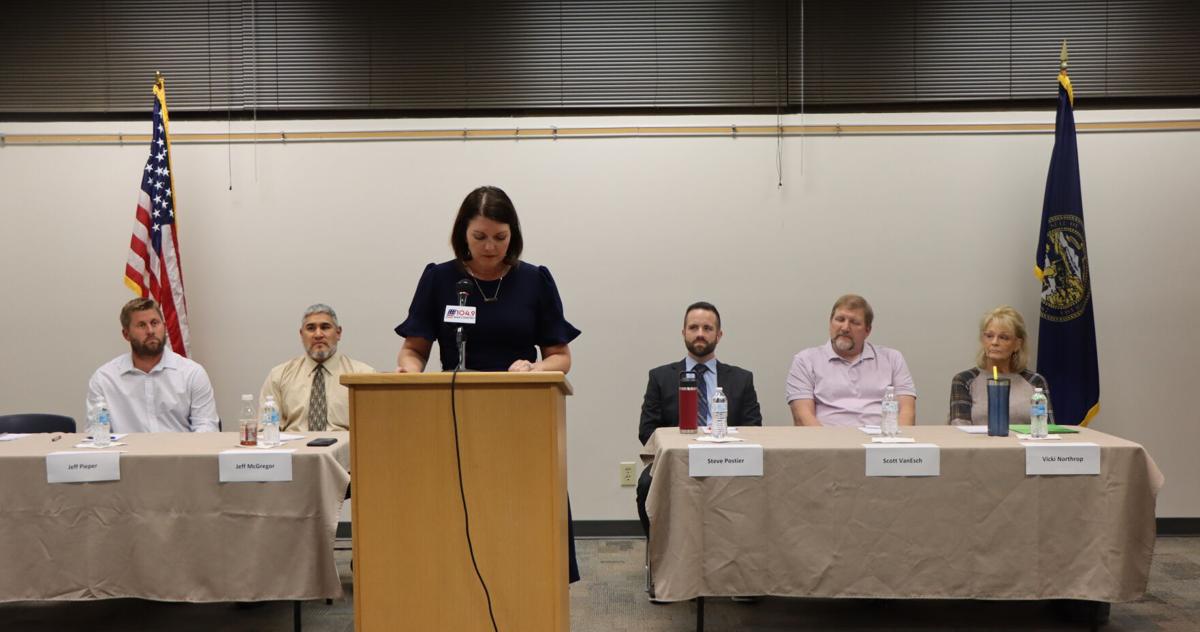A little rich price?

Tamahere’s target rate of $70 per property brings in the most money for a community hall in the Waikato District by a considerable margin.
In 2021/22 it has grossed over $115,000, and since 2007 a total of over $1 million.
Only Port Waikato residents pay a higher fare — $125 — but it brought in a more modest $54,000 in the same year due to its smaller fare base. Tuakau’s hall fund was $91,000 that year, down from a lower rate of $46 due to its greater number of taxable properties.

Around the neighborhood, rooms are of different ages and in different conditions. Comparisons are difficult, including on their varying funding rates, listed in the board’s annual plan. They show that the bulk of room rate revenue ranges from $2,000 to around $41,000.
The key question for Tamahere is that, as the Devine Rd Community Center reaches its 15th anniversary, does it still need to be funded at its current amount.
The seemingly simple question, raised by the Tamahere Community Committee (TCC), proved difficult to answer. Waikato District Council’s response has been slow and confusing; the room committee went to the floor.
TCC President Sue Robertson is in favor of target rates.
“It allows people to directly pay for the resources and services they want in their community,” she said.
But his committee has been asking the council for answers for about a year on the management of the funds raised. He would like to see accountability and transparency for Tamahere’s two target rates, which he says should apply district-wide for all target rates. (Tamahere’s targeted rates are $70 for the hall and $38 for the playing field and facilities at Tamahere Park.)
TCC would also like to see more public accountability from the Tamahere Community Center Committee, an incorporated company, which operates the heavily used hall next to the Tamahere School.
“I hope they [the hall committee] will release a long-term maintenance plan and budget to show residents what funds will be needed over the next 10 to 15 years to maintain the hall,” Robertson said.
Response to TCC initiatives has been painfully slow.
It was only after this story aired last week that Robertson got a meaningful response to the committee’s June request for more details on the room rate.
The Council’s Chief Financial Officer, Alison Diaz, provided a spreadsheet of target rate figures from 2008-09 to 2021-22. Samantha Baker, Community Venues and Events Team Leader, also responded with information on the recent appointment of a full-time Venues Officer, whose duties will include a review of targeted venue pricing across the district.

“There is a great disparity across the neighborhood with rooms in varying conditions. This review is intended to ensure that there are sufficient funds to cover operating and maintenance costs for the long-term preservation of these community assets,” Baker wrote.
What did the numbers show?
The council’s accounts revealed discrepancies both in the CFO’s spreadsheet and with other figures TCC had provided last year. Robertson, an accountant, asks for clarification.
In 2005-2006, the estimated cost of the new hall in the council’s annual plan was $1,540,000. According to the council document, financial contributions from the council, charitable trusts and local fundraising meant that a loan of $207,000 would be needed for 10 years.
The loan would be from the council at Tamahere Community Center Incorporated (aka the hall committee).
Early estimates seem to have been far from the truth. Subsequently, in November 2021, the council’s chief information officer, Geoff King, told hall committee chairman Graham McAdam in an email that in 2007 the council had decided that the loan would be $423,206 and “was for a term of 15 years with a maturity date of June 2022”.
The CFO’s numbers differ. She said the loan was set up in June 2008, was for $381,888 and had to be repaid over a much longer term – 50 years. Later, the term was revised to 15 years due to increased taxable properties in Tamahere bringing in more money, according to his information.
But both accounts agree on one thing: the loan was to be fully repaid in June 2022. In other words, last month.
What now for the target rate of $70?
The rate not only pays off the loan, with interest. Part of it—originally $20—was for hall operating costs and it went directly to the hall committee, earning it more than $46,000 in 2020. (The rate started at $60 and rose to $66 then $70 over the years.)
Now that the loan has been paid off, logic suggests that only the proportion that the hall committee directly got for repairs and maintenance will be needed in the future.
Is it time to lower the price of the richest rooms in the neighborhood?
Maybe not. Chief Information Officer Geoff King told McAdam in an email in July that he had “discussed the impact of loan repayment with our CFO and apparently following the TR [targeted rate] financing both the loan (which consumes about 40% of the RT) and the operating costs of the room, it does not automatically stop on June 30.
He suggested that a review was needed as well as consultation with taxpayers.
“…with the loan paid off and also recognizing the increased cost of running the venue (insurance, maintenance costs, etc.), it would probably be prudent for the committee to consider, [with] appropriate community engagement, which would be an appropriate TR moving forward,” King said.
Hall will be revealed?
But the room committee barely engages with the community. Its filings in the register of incorporated companies have been spasmodic. He was struck off for failing to file between 2008 and 2021 when he made a quick catch-up, filed three years worth of accounts in one fell swoop, and returned to the register.
Its annual meetings have been advertised, but few locals show up. No minutes of the AGM are available nor are the minutes of its ordinary meetings. It must have at least 10 members. There is no information about its members in the Register of Incorporated Companies or on its own website. Three names are listed on the council’s website.
Earlier this month, President Graham McAdam posted an open letter to the community on social media. He declined an interview with Tamahere Forum for this earlier story. Relations between him and TCC are strained.
Seeking clarification, the Forum this week requested an interview with hall committee treasurer Allan Spice, one was arranged but he canceled, emailing to say that “on the advice of the board, we advised me not to get involved”.
McAdam wrote in his letter that his committee voted at its annual meeting to keep the target rate at $70. Costs were rising, he said, implying that the entire levy, including the annual portion of about $41,000 that had been spent on loan repayment, would be needed to maintain and run the community center in a foreseeable future.
In 2022-23, this would give the room committee an estimated income of $117,000. Tens of thousands more than most other halls in the district.
The silence of the ward committee leaves unanswered why Tamahere, with its relatively young 15-year-old ward, needs far more money than any other of the 32 wards in the district.
Robertson hopes that his community committee and the hall committee can meet soon to frankly discuss the future of the hall. In the long term, TCC would like to see full disclosure of all target rates in a dedicated section on the board’s website.






